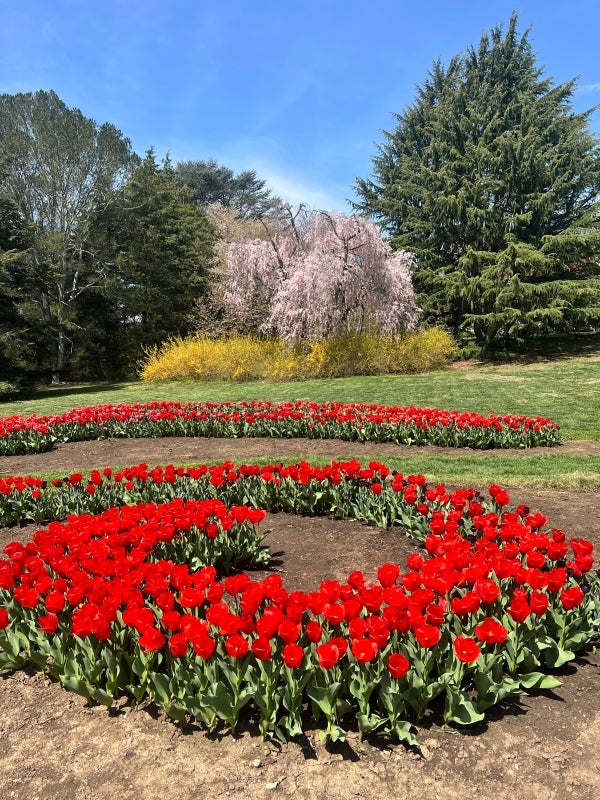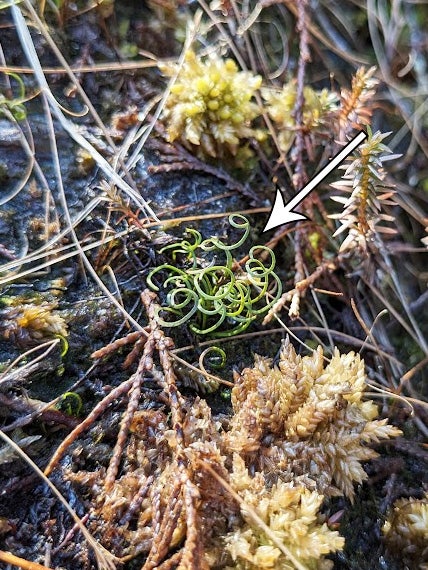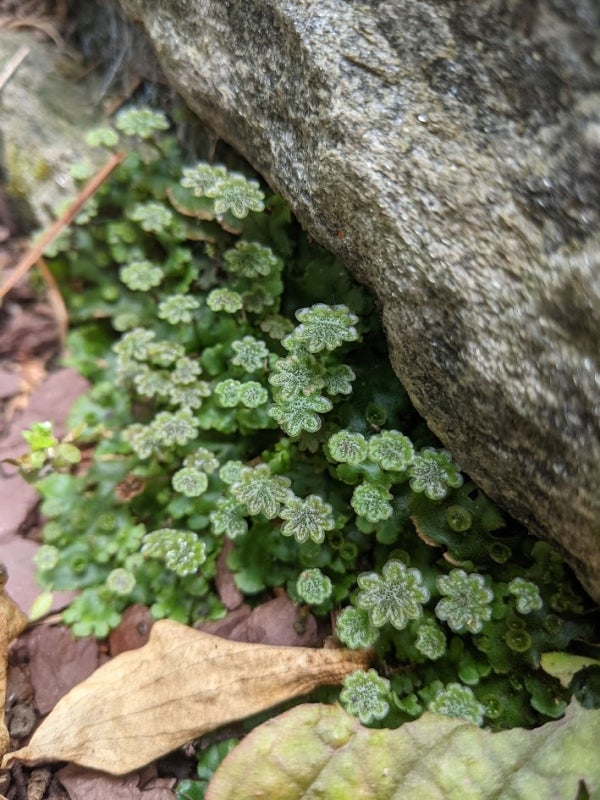Blog

Exuberant Tulips: Designing Beds in Shapes of Ferns and Mosses
Exuberant Blooms, the Morris Arboretum & Gardens’ annual display featuring eight paisley-shaped beds inspired by Victorian flower bedding, is currently in bloom with tulips that sprawl across the landscape in loops and curls. But there’s more than meets the eye: When viewed from above, these plantings depict the shapes of ferns, liverworts, and other plants. The European aristocracy of the Victorian era was enamored with unique plants including ferns, which were often the object of collectors’ desire. Now, I could tell you more about how the Victorians inspired me to plant the tulips in these shapes that they would’ve found fashionable in 2025, but really, I just wanted an excuse to show off some underappreciated and often unnoticed



In bed 3 (see photo above) you can find a trio of curls representing the unfurling stems of the resurrection plant (Selaginella lepidophylla). These fascinating plants can survive near-complete desiccation, going months or even years without any water, only to uncurl after just a few hours of rehydrating. In bed 5, tulips fashion possibly the largest-ever artistic rendering of a curly grass fern (Schizaea pusilla). You can search for this rare little fern nearby in the Pine Barrens of New Jersey but be warned: The grass-like fronds form tight coils that barely reach 10 centimeters, so don’t expect to find this little beauty right away.


In bed 4, the tulips display the umbrella liverwort (Marchantia polymorpha), a non-vascular plant that looks alien upon close inspection. Their reproductive structures remind me of miniature palm trees, and you can find them locally growing on bare soil, stone, or in greenhouses.


Other tulip masses feature the shapes of sporophytes of mosses, like bug-on-a-stick moss (Buxbaumia aphylla) in bed 2 and silver moss (Bryum argenteum) in bed 1. Sporophytes are the spore-producing structures that usually stand daintily above the moss. While the wonderfully named bug-on-a-stick moss is fleeting in nature and tricky to find, silver moss is well adapted to urban life, taking up residence on stone buildings and cracks in the pavement.
After you’ve finished appreciating the curls and swoops of the vibrant tulips, take a moment to look for the less splashy plants that inspired the display. Peer closely at the branches and trunks covered in mosses. See if you can find the miniature umbrellas rising above the liverwort or the sporophytes poking out of moss clumps. Notice how the different mosses, liverworts, lichens, and spikemosses form a spectacular quilt of greens, browns, and grays. For a few minutes you should forget about the lovely spring flowers and get lost in this miniature world—and, if you have the chance, drag someone else along with you.